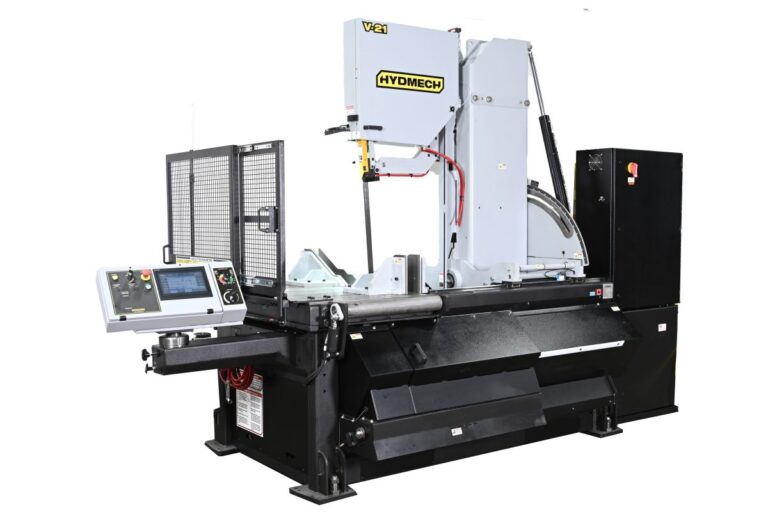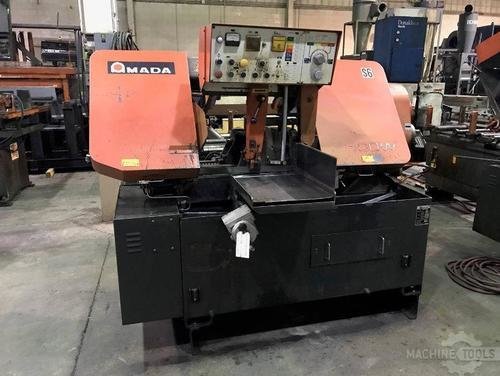I spend most of my time helping shops translate growth goals into the right mix of technology, process, and financing. When large parts or thick plate start to clog the schedule, the constraint is almost always bending length or tonnage. Tandem press brakes remove that ceiling while preserving day-to-day agility. Pair that with Section 179 tax treatment and you can reduce net acquisition cost and shorten payback, which means you move faster on capacity that supports revenue, resilience, and long-term competitiveness.
Strategic Capacity Expansion: Tandem Press Brakes Open New Revenue in Heavy and Oversize Bending
When a shop outgrows a single long-bed brake or keeps outsourcing big bends, the symptom is easy to spot. Long lead times on large parts, weekend setups to catch up, and quotes you hesitate to send because bending is the bottleneck. Tandem press brakes let you electronically link two CNC brakes so they function as a single synchronized system for long parts, then decouple for everyday work. You gain effective length and additive tonnage for heavy sections, without losing the flexibility of two independent machines.
This change opens doors. Long agricultural frames, trailer beams, construction components, racking uprights, large electrical enclosures, and energy or infrastructure parts move from “special case” to standard work. Shops can pursue higher-margin, oversize contracts and keep control of quality and delivery. With proper tooling and crowning, a tandem configuration delivers consistent angles across long bends and reduces the hidden cost of rework and freight from outsourcing.
Most importantly, you expand strategically. Instead of buying a single extra-long brake that sits idle during short-part weeks, you get two productive assets that create capacity for both ends of your mix. The machine room becomes an enabler for sales, not a gating factor.
HEAVY DUTY
TANDEM PRESS BRAKE
Operational Agility at Scale: Pair-unpair modes, quick-change tooling, and cell layouts that raise OEE
Modern tandem-capable brakes use a master CNC to synchronize ram positions, backgauges, crowning, and safety logic. With a few commands, operators switch between tandem mode for long parts and independent mode for short jobs. This keeps overall equipment effectiveness high because each frame can run its own schedule when you are not bending long parts.
Changeover speed matters. Quick-clamp systems for American or European style tooling, segmented punches and dies, and standardized tool libraries cut setup minutes that otherwise become hours on long-bed work. Add follower supports for long sheets, bend aids for heavy plate, and gauging that spans the tandem width to stabilize material and reduce operator fatigue. Offline bend simulation and program staging allow you to validate the tooling stack, collision risk, and sequence before the job hits the floor.
Layout is the multiplier. A tandem cell with clear material flow, pre-stage racks, and crane access avoids congestion. Dedicated lift points, roller support tables, and safe walking paths let a two-person team manage long parts efficiently. The result is higher throughput with fewer surprises and a smoother day for supervisors who are balancing hot jobs with planned work.
Financial Clarity: Use Section 179 and measured cycle-time reduction to accelerate ROI and reduce CapEx risk
I advise clients to build a simple model that ties bending capacity to cash. Start with current constraints: outsourced bending spend, expedite fees, WIP delays, and rework from long-part angle variation. Layer in measured cycle-time reductions per part from tandem mode, the ability to run two short-part jobs in parallel, and the new revenue from long-part work you can now quote. Convert minutes saved into labor and overhead dollars, and you have a grounded benefit line.
Section 179 can then compress payback by lowering your net acquisition cost in the first year. Qualifying equipment that is placed in service within the tax year can often be fully expensed up to the annual limit, with bonus depreciation potentially available on the remainder where applicable. The effect is real cash savings on taxes that can exceed the first several months of payments if you finance. Always confirm details with your tax advisor since limits and eligibility can change.
Financing structures can align with ROI. Fixed-rate term loans, $1 buyout leases, or seasonal payment schedules can match your cash flow to the ramp in production. When the tax savings arrive, you can apply them to principal reduction or working capital. The combination of cycle-time improvement and Section 179 treatment is what turns a capacity upgrade into a short payback rather than a multi-year wait.
Risk-Managed Deployment: Power, floor loading, safety, and software readiness to hit first-part-correct
Successful installs start with groundwork. Verify available power, typically 480-volt three-phase, along with panel capacity and any transformer needs. Confirm floor loading and flatness against the machine specification, especially for heavy frames and long beds. Plan the rigging path, crane capacity, and staging area so you do not disrupt the rest of production.
Safety must be designed in, not bolted on. Tandem mode requires synchronized safety logic, approved light curtains or laser guarding, proper muting for gauging, and a clear risk assessment aligned to current standards and your EHS policies. For long-part work, add follower arms or support devices to reduce strain and stabilize the bend. Train operators on safe lifts, long-part handling, and lockout procedures so the first long bend is as safe as the thousandth.
Software readiness is the final mile to first-part-correct. Validate that your offline bending software, post processors, and network connections can drive both brakes in tandem and individually. Build standard tool libraries with accurate die heights, radii, and offsets. Run acceptance tests with your real parts, not just sample coupons, and confirm angle accuracy across the full length using crowning and, if required, angle measurement systems. A tight loop between programming and the floor keeps the first article on-spec and the schedule on time.
Mac-Tech as a Growth Partner: Technology selection, integration, training, and lifecycle service that compound value
At Mac-Tech, my team and I match your part mix and growth plan to the right tandem-capable press brakes. We help you weigh hydraulic versus electric drives, tonnage and bed length, backgauge coverage, crowning options, follower supports, and control platforms that simplify tandem synchronization. Our goal is to give you the flexibility to switch between long and short work without sacrificing accuracy or speed.
We manage the integration end to end. That includes site surveys, power and foundation reviews, rigging coordination, tooling packages, offline programming setup, and cell layout that supports cranes, staging, and flow. Your operators and programmers get hands-on training, and your maintenance team receives a preventive maintenance plan so uptime stays high. If you are upgrading from a single long-bed brake, we can coordinate trade-in or redeployment to keep your capital efficient.
Value compounds across the lifecycle. Remote support, spare parts, periodic calibration, and on-site service keep the tandem system producing. As your mix evolves, we can add automation for part handling, integrate with your ERP for program and job data, and expand tooling libraries to reduce changeovers. My direct line is open if you want to run numbers, explore financing, or schedule a demo: joe@mac-tech.com, 414-477-8772.
FAQ
What kinds of work see the fastest payback from tandem press brakes?
- Italicized answer: Large enclosures, trailer and chassis components, agricultural frames, and structural parts in mild steel or stainless typically see big gains because long bends and heavy gauges are the bottleneck.
Does Section 179 apply to used equipment?
- Italicized answer: In many cases, yes. Section 179 can apply to qualifying used equipment that is new to you and placed in service during the tax year. Confirm eligibility and limits with your tax advisor.
How do I decide between hydraulic and electric press brakes for tandem use?
- Italicized answer: Hydraulic brakes are proven for high tonnage and thick plate, while electric models deliver speed and energy efficiency at moderate tonnage. Your material thickness, part length, and accuracy requirements will guide the choice.
Can my existing tooling work on a tandem setup?
- Italicized answer: Often yes, if the style and clamping match. We review your current American or European style tooling, die heights, and clamping to ensure consistent setup across both frames, and we provide adapters or new tooling where needed.
What is a realistic installation timeline?
- Italicized answer: From order to first production, 8 to 16 weeks is common, depending on build lead time, site readiness, and complexity. We front-load programming, tooling, and safety planning to compress the ramp.
When should I add automation for long-part handling?
- Italicized answer: Add automation when part weight, bend count, or takt time makes manual handling your constraint. Start with follower supports and staging, then evaluate robotic or gantry handling once the process is stable.
- How do you model ROI beyond cycle time?
- Italicized answer: Include reduced outsourcing, fewer expedites, lower WIP, improved first-pass yield on long parts, and new revenue you can quote. Then apply Section 179 and financing terms to see the cash payback window.
Get Weekly Mac-Tech News & Updates







